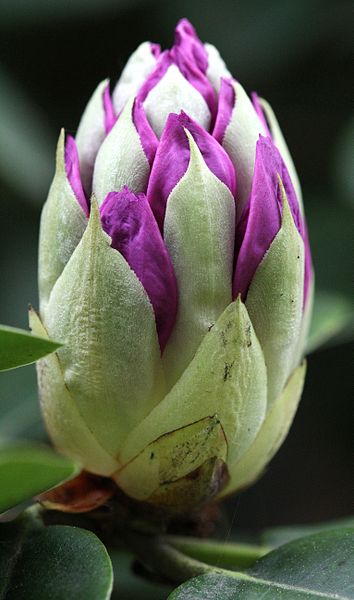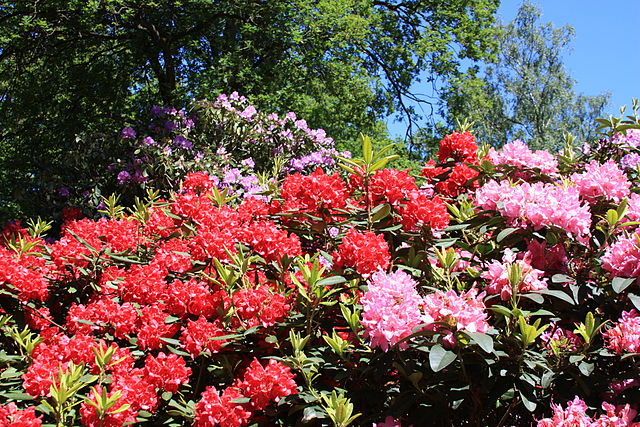Last updated on October 25th, 2023 at 10:58 am
In fact, rhododendrons are rarely pruned. But when a rhododendron grows old, bare and sparse, it certainly helps to prune. In this case, they even accept a strong pruning into the old wood and then rejuvenate themselves again.
The best time for pruning is always immediately after flowering. However, you can also cut off shoots in early spring, but then you have to be satisfied with fewer flowers.

Pruning is always at the expense of flowering for the next year, because the plants first use their strength to develop shoots. Support with a suitable fertilizer (leaf compost, special rhododendron fertilizer, etc.) will promote rejuvenation. If you cut back the rhododendron vigorously, it will probably bear hardly any or very few flowers in the coming year.
For a “normal” pruning, it is sufficient to shorten shoots that are too long stemmed. This will encourage them to sprout dormant eyes (closed buds) and branching.
By the way, after flowering, the withered inflorescences are broken out by hand. This is not only for visual reasons, but also prevents fungal infections and diseases.

Pruning rhododendrons should be done with care and at the right time to ensure healthy growth and prolific blooming. The best time to cut or prune rhododendrons is after they have finished flowering. Here’s the optimal timing for pruning rhododendrons:
After Flowering: Rhododendrons typically bloom in late spring or early summer. Once the flowers have faded, you can prune the rhododendron. This is usually in late spring or early summer, depending on your region’s climate. Pruning after flowering allows the plant to set buds for the next year’s blooms. If you prune too late in the growing season, you may remove next year’s flower buds.
Here are some general tips for pruning rhododendrons:
- Remove Dead or Dying Wood: Cut back any dead or diseased branches to healthy tissue. This helps prevent the spread of diseases and encourages new growth.
- Shape the Plant: Prune for shape and to control the size of the plant if necessary. Rhododendrons can become leggy or too dense if not pruned.
- Remove Spent Flowers: Deadhead (remove) spent flowers to improve the plant’s appearance and prevent seed formation.
- Avoid Drastic Pruning: Rhododendrons do not tolerate drastic or heavy pruning well. It’s better to lightly prune each year to maintain the desired shape and size rather than cutting back too severely.
- Use Clean, Sharp Tools: Always use clean and sharp pruning shears or loppers to make clean cuts. Clean your tools between cuts or between different plants to prevent the spread of diseases.
- Prune Above Buds: When making cuts on branches, cut just above a set of healthy, outward-facing buds. This encourages new growth to develop in the right direction.
Keep in mind that rhododendrons have specific preferences for soil pH and environmental conditions. Make sure the plant is in a suitable location and has the right soil conditions to thrive. Pruning should be done in conjunction with proper care to ensure the health and beauty of your rhododendrons.


